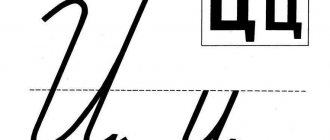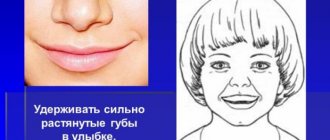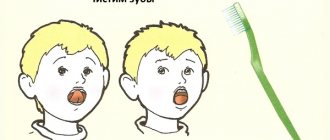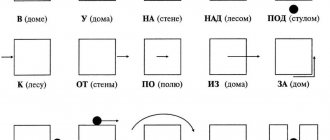Types and causes of pronunciation disorders
The following types of violations of the sound pronunciation of the sound “Y” are distinguished:
- absence - the child has not yet learned to pronounce the sound and simply misses it in his speech, for example, “cha” and “sparrow”, instead of “tea” and “sparrow”;
- replacement - when a child replaces the sound “Y” with “L”, for example, pronouncing “chalka” instead of “seagull”.
The reasons for incorrect pronunciation of a sound are often:
- structural feature of the articulatory apparatus;
- undeveloped phonemic hearing;
- insufficiently mobile articulatory apparatus;
- bad speech from others.
Vowel articulation is normal
The vowel category includes 6 phonemes: A, I, U, O, E, Y. When they are pronounced, the air is exhaled with sound; in the extension pipe or resonator chamber it acquires a certain timbre, which depends on the outline of the oral cavity and pharynx, and the direction of the air flow.
In addition to the above, here are the vowel sounds in the Russian language: Yo, E, Ya, Yu. These are iotated phonemes, that is, formed from O, E, A, U with the addition of the sound Y. Each of the listed phonemes needs a clear external and pharyngeal articulation, otherwise speech will be inexpressive and ugly.
The articulation of vowels has a common feature: the raised soft palate is pressed against the back surface of the pharynx, the air flow through the nasal cavity is blocked, as a result, the air flows through the oral opening. The vocal folds tense, forming the sound.
Here is the articulation of specific vowels:
- A – the jaws are open, the distance between the teeth is about 1.5 cm, the lips do not completely cover the incisors and canines, the tongue lies relaxed, with the front edge touching the lower teeth;
- O – the lips are rounded and slightly elongated, covering the teeth, the tongue is moved deeper into the oral cavity, tense, and raised towards the soft palate in the back;
- U - the lips are compressed and extended like a pipe, the upper teeth do not touch the lower ones, the tongue is raised to the palate, and its base is pushed deep into the oral cavity;
- And - the lips smile slightly, slightly exposing the teeth, the tongue is moved forward, raised;
- E - the lips are smiling, the mouth is open so that the teeth are visible, the tip of the relaxed tongue touches the lower row of incisors, and the sides touch the upper molars;
- Y - the mouth is slightly open, the lips are stretched, there is a small distance between the incisors, the tense tongue is pushed back, raised at the back, but does not touch the palate.
Producing vowel sounds in children
Let's look at the principles of vowel placement one by one. At the beginning of classes, articulatory gymnastics, massage of the tongue and cheeks are used to improve the motor skills of the articulation organs.
Stage A
To develop breathing, speech therapy exercises are used: “Dive” - inhale through the mouth and exhale through the nose, and “Smell the flower” - inhale slowly and smoothly, without raising your shoulders, say “Ah!” as you exhale, as well as causing water to bubble in a glass by blowing air through a large diameter straw.
To produce sound A, the speech therapy game “Warming Your Palms” is used, aimed at forming a long, uniform and strong stream of air. The child rounds his lips and evenly exhales warm air onto his hands, as he would do in frosty weather, saying “A-a-a-a-a.”
Statement O
To improve phonemic awareness, the game “What do I play?” is used. The teacher plays musical instruments without showing them to the children, and they try to guess which object makes the sound.
To develop breathing ability, the games “Diving” and “Blowing out a Candle” are used. In the second case, the child takes a deep nasal breath, slowly and quietly exhales air onto the candle flame so that it does not go out, then makes a strong and prolonged exhalation so that the fire goes out. The water bubbling challenge is also used, only through a straw of small diameter.
The sound O is made by imitation using the game “How does a sick person groan?” The child inhales deeply through his nose. Pursing his lips into a tube and opening his mouth, he exhales, while quietly saying: “Oh-oh-oh-oh.”
Staging I
To improve breathing, the teacher asks the child to blow like a light breeze, and also to create a bubbling water using a large diameter straw.
The sound I is made by imitation: pronounced slowly, with a gradual lengthening of the exhalation. The teacher suggests shouting like a donkey. The student says: “Eey-ey-yah!”
The second method is mechanical. The speech therapist applies slight pressure on the end of the tongue, moving it towards the incisors of the lower dentition.
Statement E
To improve auditory perception, the exercise “Who is screaming?” is used. The teacher plays recordings of sounds made by different animals, and the student must find out who screams like that. Then the preschooler looks at the images of animals and points with his finger whose voices he heard.
The breathing exercises are still the same: “Dive”, blow like a light breeze, and make the water bubble with a large-diameter straw.
To produce the sound E, the game “Sighs” is practiced. The child imagines that he wants to breathe after hard work. He takes a deep breath of air through his nose, brings the tip of his tongue to the lower incisors and, opening his mouth, stretching his lips in a slight smile, quietly says: “Uh-uh-uh.” When a preschooler learns to quietly pronounce a phoneme, you can move on to pronunciation out loud.
Statement Y
To improve auditory perception, the game “What do I play?” is used. To develop breathing ability, singing vowels is practiced.
The Y sound is made by imitation and mechanical method. In the second case, the speech therapist lightly presses on the tip of the tongue with a spatula and pushes the tongue back.
Statement U
To improve breathing ability, the tasks “Blowing out a candle” and creating bubbling in a glass using a large diameter straw are used.
The sound U is made by imitation. The teacher asks how wolves howl at the moon. The student says: “Oooh!” As a lost mushroom picker screams in the forest: “Aww!” What sounds does a cow make: “Moo-oo-oo-oo!”
The second method of installation is mechanical. The speech therapist uses a spatula to move the tongue back and stretches the child’s lips with his fingers.
Articulatory gymnastics for vowel sounds
Clear pronunciation is largely determined by the development of the speech organs. To improve the functionality of the speech apparatus, articulatory gymnastics are used:
- Garage. The child opens his mouth wide, imagining that this is a garage into which cars are driving, while his tongue is relaxed. After 5 seconds it closes. And so on 2 more times.
- Dog. The speech therapist shows an image of a dog, how it grins, so the animal smiles. Then he invites the child to smile like a dog, showing his teeth. During the exercise, the preschooler looks at himself in the mirror.
- Hamster. The child looks at the image of an animal with its cheeks puffed out. The speech therapist suggests that the preschooler puff out his cheeks like a hamster and hold the air for 5 seconds without opening his mouth.
It is advisable to carry out articulatory gymnastics in the form of a game so that the preschooler does not lose interest. You can come up with a unifying game plot for exercises.









